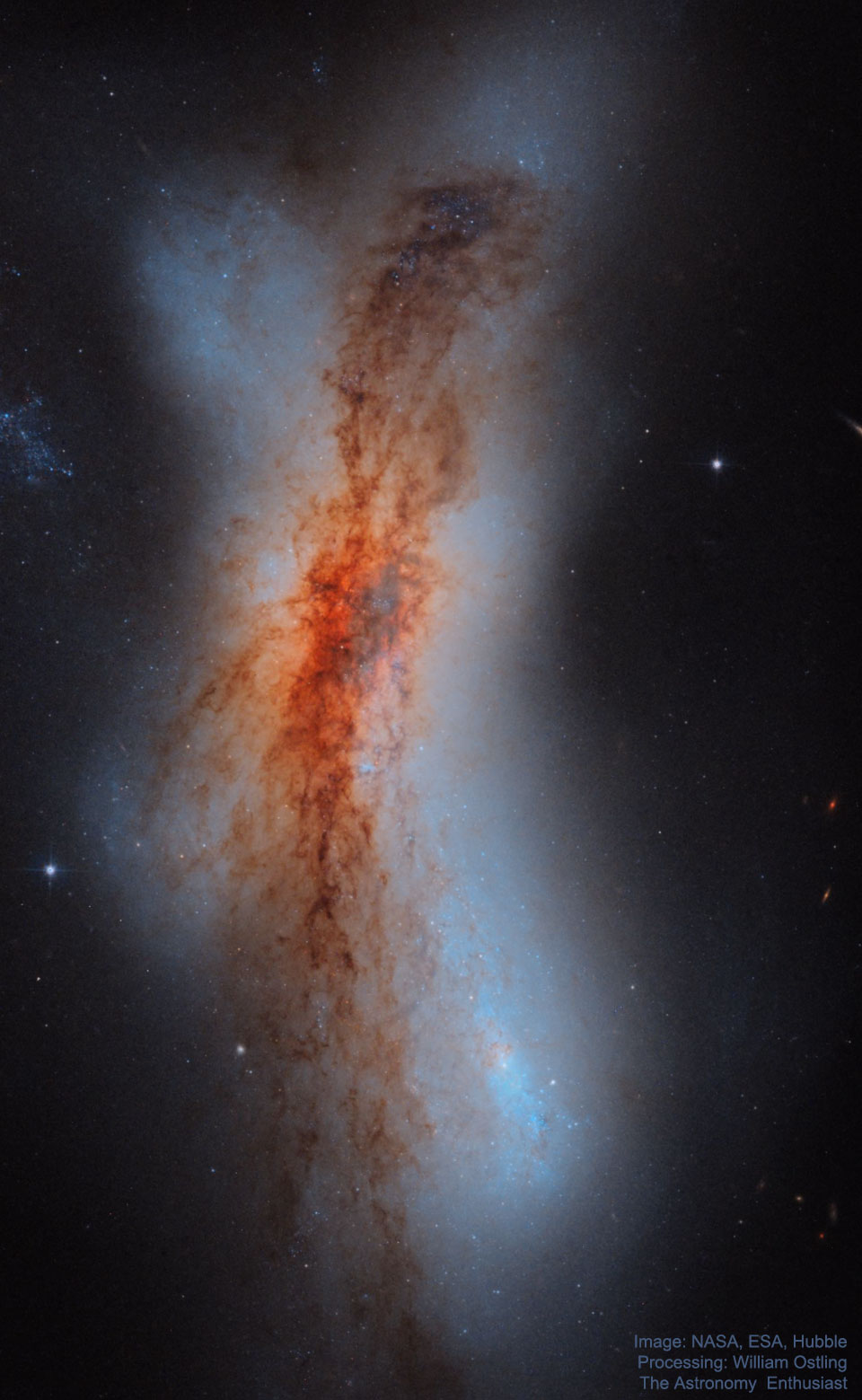2021年9月7日
NGC 520: Colliding Galaxies from Hubble
Image Credit: NASA, ESA, Hubble; Processing & Copyright: William Ostling (The Astronomy Enthusiast)
Explanation: Is this one galaxy or two? The jumble of stars, gas, and dust that is NGC 520 is now thought to incorporate the remains of two separate disk galaxies. A defining component of NGC 520 — as seen in great detail in the featured image from the Hubble Space Telescope — is its band of intricately interlaced dust running vertically down the spine of the colliding galaxies. A similar looking collision might be expected in a few billion years when our disk Milky Way Galaxy to collides with our large-disk galactic neighbor Andromeda (M31). The collision that defines NGC 520 started about 300 million years ago. Also known as Arp 157, NGC 520 lies about 100 million light years distant, spans about 100 thousand light years, and can be seen with a small telescope toward the constellation of the Fish (Pisces). Although the speeds of stars in NGC 520 are fast, the distances are so vast that the battling pair will surely not change its shape noticeably during our lifetimes.
Tomorrow’s picture: what surrounds andromeda
NGC 520:哈勃拍摄的互撞星系
影像提供: NASA, ESA, Hubble; 影像处理与版权: William Ostling (The Astronomy Enthusiast)
说明: 这是一个还是两个星系啊?这个编录号为NGC 520,由恒星、气体、和尘埃组成的乱集团,现在咸认是原先两个独立碟状星系的孑遗。在这幅由哈勃太空望远镜所拍摄的主题影像里,可清楚看到作为NGC 520关键结构的一道错综复杂的尘埃带,沿着它们的连接轴穿过这对碰撞星系。再过数十亿年之后,当我们的碟状银河系和邻近的碟状仙女大星系(M31)撞在一起时, 预期也会出现类似的景观。造就NGC 520的碰撞事件,大约起始于3亿年前。宽约10万光年、小望远镜即可见、亦名为Arp 157的NGC 520,位在双鱼座方向约1亿光年远之处。虽然NGC 520的恒星之移动很高速,然而这对碰撞星系的距离是如此的遥远,在我们一生的期间,绝看不到它们的形状出现明显的改变。
明日的图片: what surrounds andromeda



